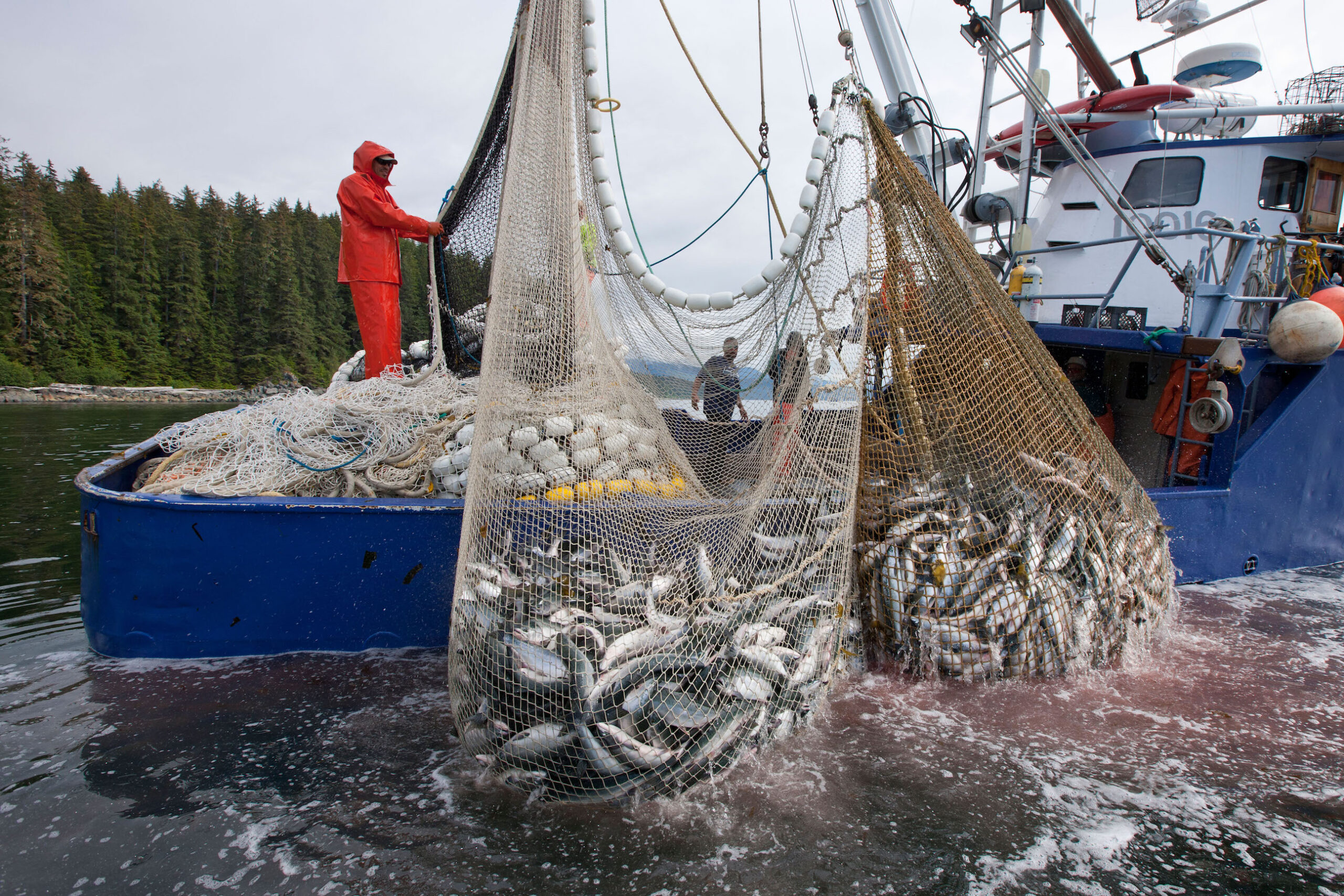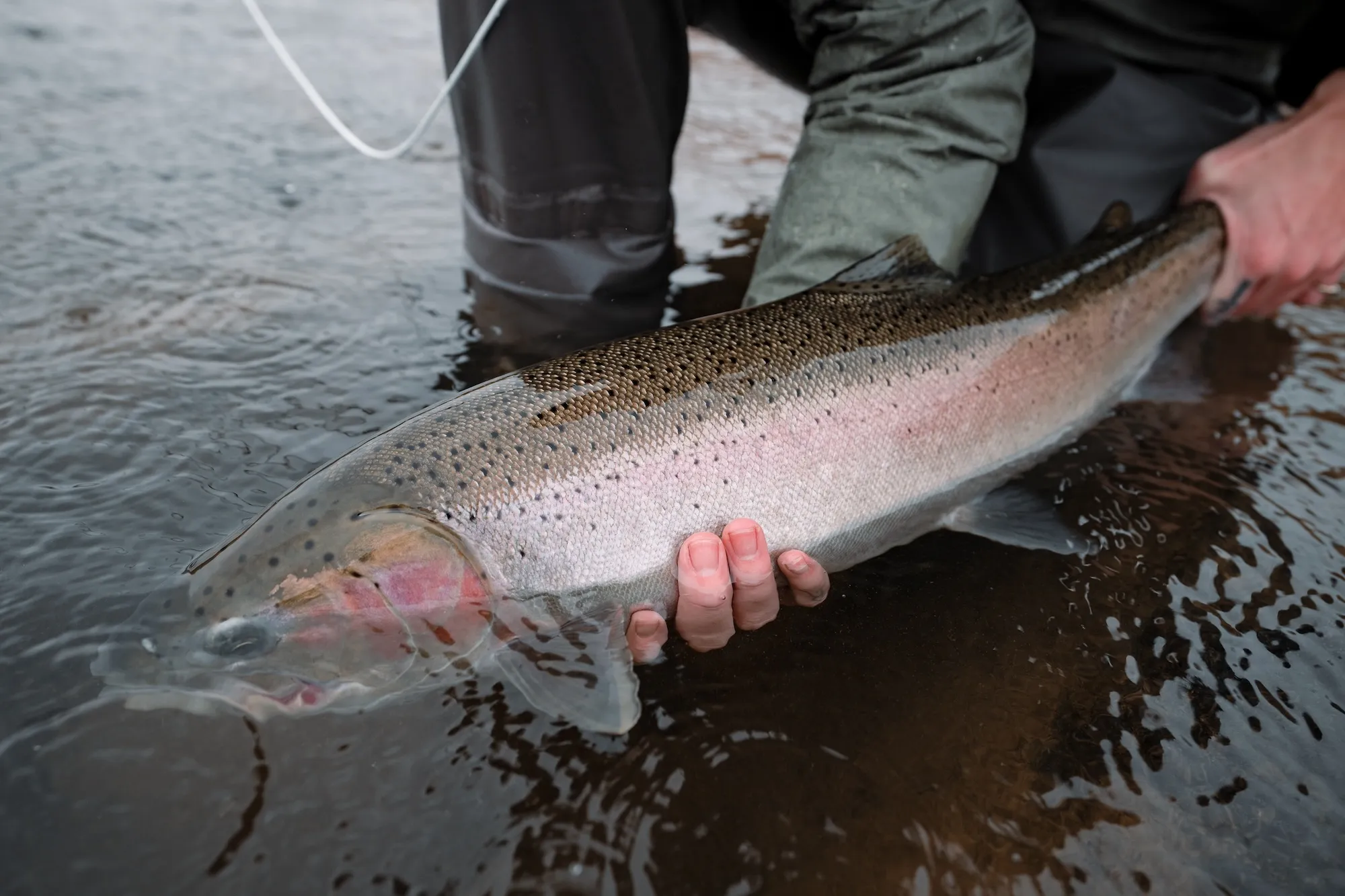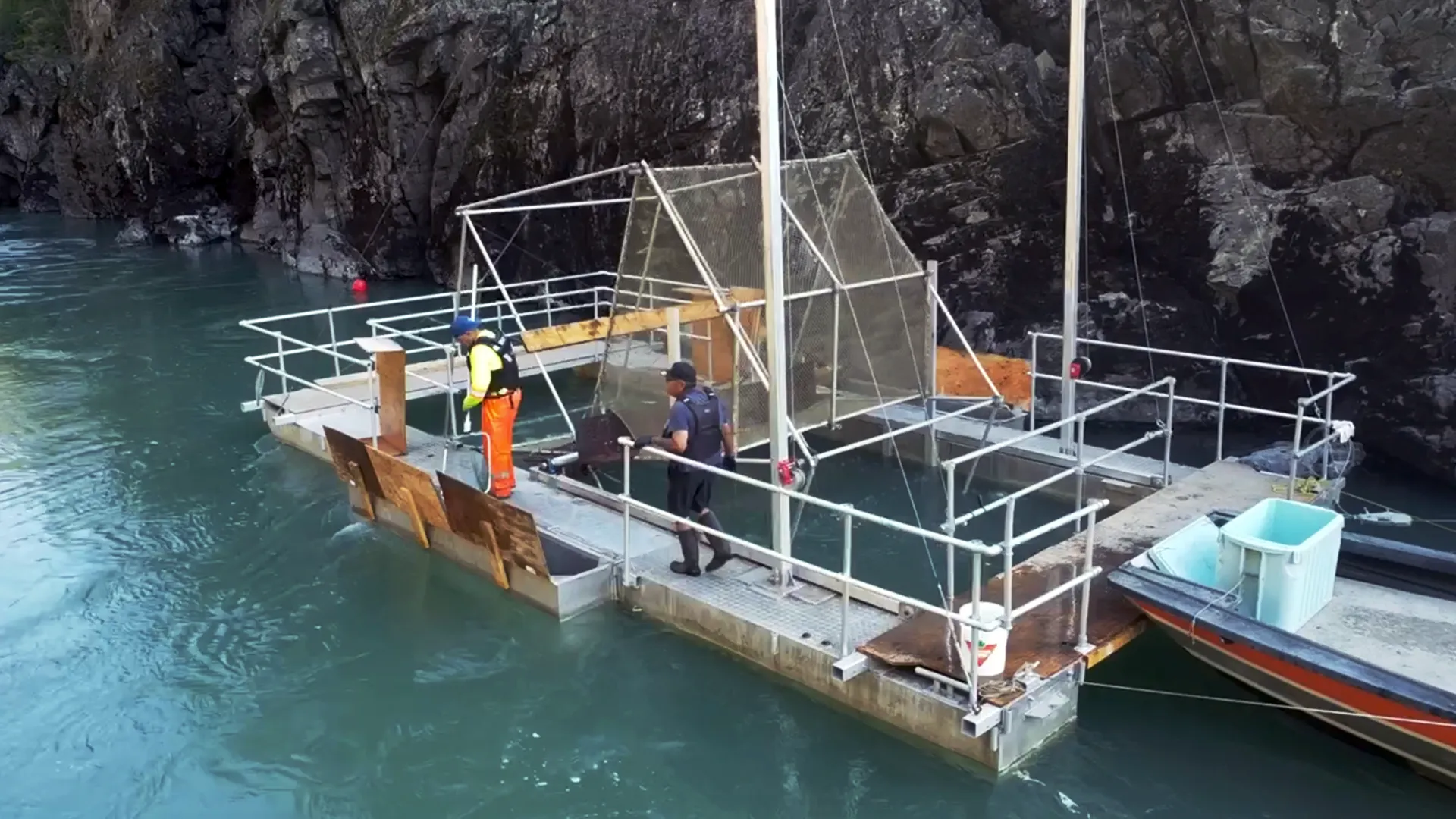Defend Skeena Steelhead From Alaska’s Nets
The greatest steelhead river in the world needs your help
Unsustainable net fisheries are the largest source of mortality for steelhead bound for the Skeena River – especially when those fish are released dead.
The most damaging are Southeast Alaska’s interception commercial fisheries, which kill millions of our migrating salmon and an estimated 10-50% of returning steelhead each year. We don’t know the precise number because fishers in Alaska are not required to record and report their bycatch.
Steelhead are a keystone species in the Skeena watershed, as their presence is an indicator of ecosystem health. We’re celebrating a strong return of steelhead to the Skeena this year, a welcome relief after five years of poor returns, with three of the lowest on record. But even in good years like this, too many are lost to Alaskan nets.
We need selective fishing practices, transparent reporting, and fishery-independent monitoring in Southeast Alaska.
The time to act is now. Nathan Cullen, B.C.’s Minister of Land, Water, and Resource Stewardship manages steelhead. He needs to stand up to the Alaskans. However, it’s not only Alaskan nets that intercept steelhead. Fisheries Minister Dianne LeBouthillier let gillnetters fish hard during Skeena steelhead’s conservation window. She needs to be held accountable.
As there are challenges to face once they’ve made it to the rivers too, it’s imperative that, in both good and bad years, steelhead have safe passage home, Skeena steelhead need safe passage to return home.
Tell decision-makers to act before unsustainable net fisheries destroy the world’s greatest steelhead run.
Tell Decision Makers to Defend Skeena Steelhead





This campaign is supported by:

Contact us:
Other News

Legal Challenge Filed Against Decision Allowing KSM Mine to Proceed
KSM Gold Mine Judicial Review Legal Challenge Filed Against Decision Allowing KSM Mine to Proceed The proposed mine threatens Nass and Unuk watersheds, relies on…

Alaska salmon fishery objection dismissal ‘seriously undermines’ MSC credibility
Alaska salmon fishery objection dismissal ‘seriously undermines’ MSC credibility Watershed Watch, Raincoast Conservation and SkeenaWild’s objection to SE Alaskan fisheries’ sustainable rating was rejected this…

B.C. NGOs head to Seattle for final step in their objection to the certification of southeast Alaska salmon fisheries
B.C. NGOs head to Seattle for final step in their objection to the certification of southeast Alaska salmon fisheries Alaska’s fisheries should not be accredited…

The Future Is Selective
The Future Is Selective This summer, B.C. salmon fishing has offered a glimpse into a sustainable future. In the Skeena, fisheries have opened with strong…

Legal Challenge Filed Against Decision Allowing KSM Mine to Proceed
KSM Gold Mine Judicial Review Legal Challenge Filed Against Decision Allowing KSM Mine to Proceed The proposed mine threatens Nass and Unuk watersheds, relies on…

Alaska salmon fishery objection dismissal ‘seriously undermines’ MSC credibility
Alaska salmon fishery objection dismissal ‘seriously undermines’ MSC credibility Watershed Watch, Raincoast Conservation and SkeenaWild’s objection to SE Alaskan fisheries’ sustainable rating was rejected this…

B.C. NGOs head to Seattle for final step in their objection to the certification of southeast Alaska salmon fisheries
B.C. NGOs head to Seattle for final step in their objection to the certification of southeast Alaska salmon fisheries Alaska’s fisheries should not be accredited…

The Future Is Selective
The Future Is Selective This summer, B.C. salmon fishing has offered a glimpse into a sustainable future. In the Skeena, fisheries have opened with strong…